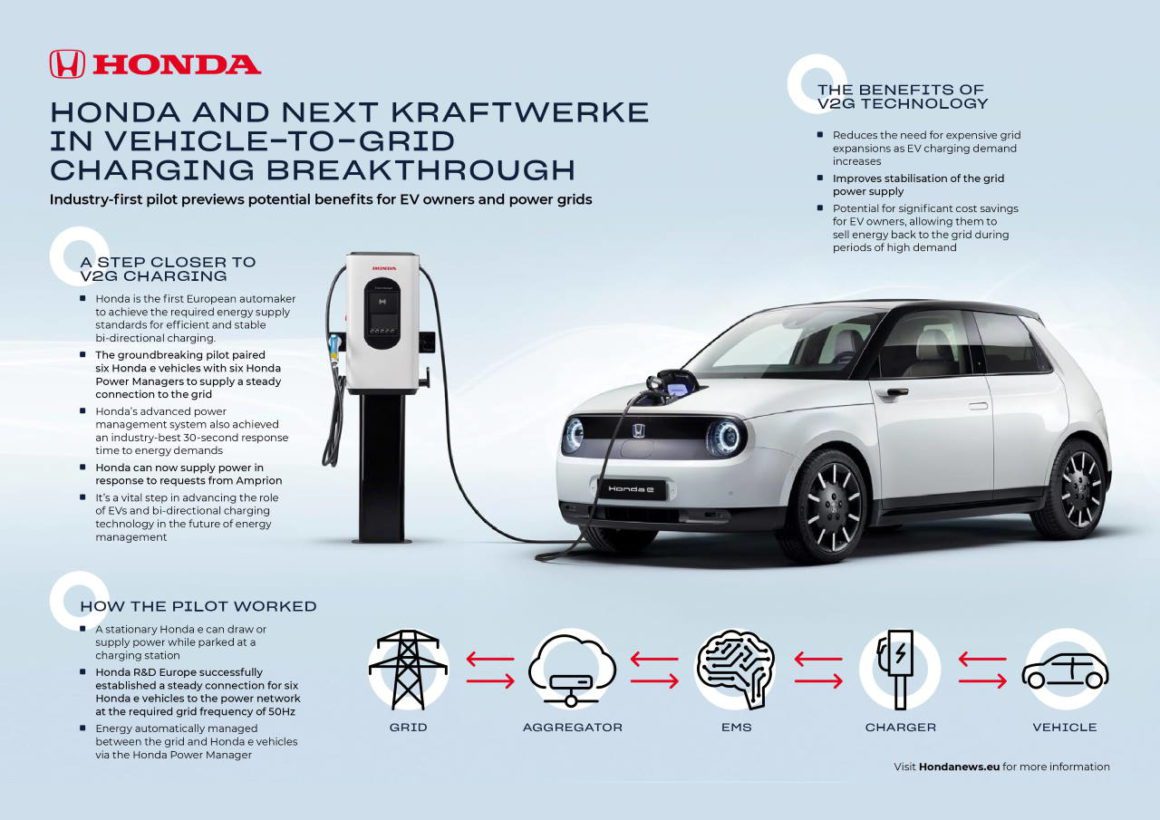A fleet of Honda electric vehicles has successfully provided grid balancing services for German transmission system operator Amprion.
Billed as “a significant breakthrough in vehicle to V2G technology”, a pilot project conducted between Honda’s advanced research and development division, Honda R&D Europe, and Next Kraftwerke, one of Europe’s largest virtual power plant (VPP) operators, used a fleet of Honda EVs to provide first response to frequency disturbances.
This makes Honda the first automaker in Europe to receive certification of a fleet of mass produced EVs for the prequalification of frequency containment reserve (FCR). Certification was awarded by German transmission system operator (TSO) Amprion GmbH.
TSOs like Amprion rely on balancing services that automatically step up to restore the balance between electricity supply and demand when there are short-term frequency deviations in the power grid.
Of the variety of balancing services available to TSOs, frequency containment reserve (FCR) – also known as primary control reserve – is the highest performance class for grid stabilisation and is the first response to frequency disturbances.
In the pilot project undertaken by Honda R&D Europe and Next Kraftwerke, a fleet of 6 Honda-e’s and 6 Honda Power Manager bi-directional CCS chargers were used to fulfil the high requirements for charging and discharging that are necessary to ensure stable 50Hz grid frequency.

The pilot used real-time information from Next Kraftwerke about current power capacity, while Honda’s own power management system was able to respond within required standard time to charging and discharging commands of the TSO to each individual vehicle.
Further, and importantly for widespread commercial adoption, Honda’s management system was also able to ensure the continued state of charge (SOC) preferences of the individual EV drivers.
As Honda explained, the success of the pilot serves as “a vital step for advancing the role of EVs and bi-directional charging technology in any future sustainable energy system.”
“The project with Next Kraftwerke enables Honda to meet the new demands of the European market and deliver on its commitment to develop technologies that are creating value for society,” said Tom Gardner, senior vice president of Honda Motor Europe.
“Typically, EVs are parked and connected to a charging station for most of the day, at offices and on driveways. Honda has identified that these standing times can be better utilised to offer additional services and revenues, through smart charging and discharging based on the current power grid frequency.
“This not only benefits EV owners, but also the surrounding infrastructure as we transition into an e-mobility-driven society.”
Joshua S. Hill is a Melbourne-based journalist who has been writing about climate change, clean technology, and electric vehicles for over 15 years. He has been reporting on electric vehicles and clean technologies for Renew Economy and The Driven since 2012. His preferred mode of transport is his feet.


